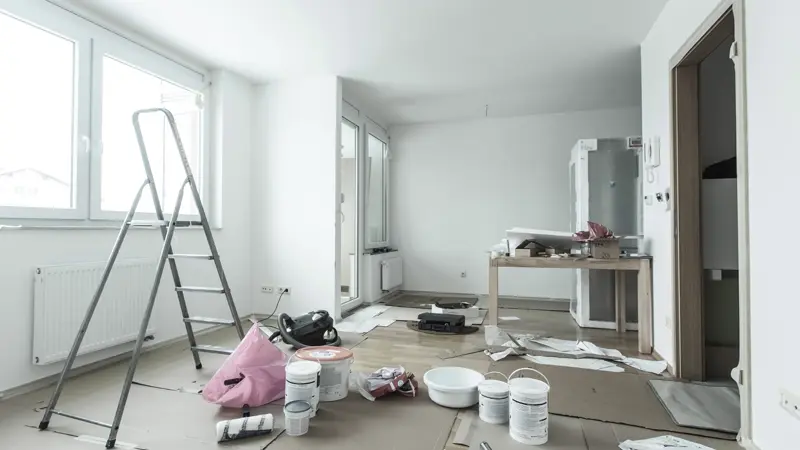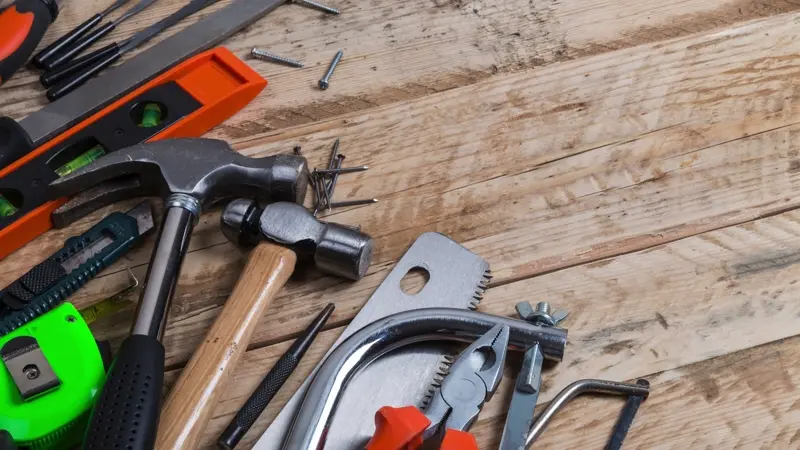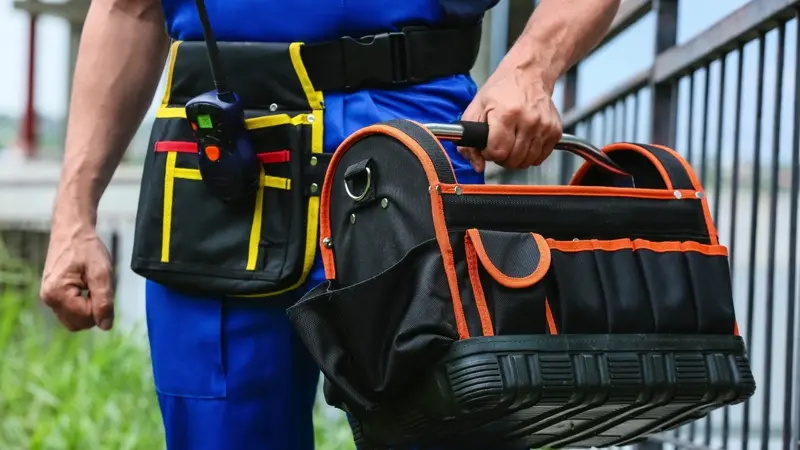Every masterpiece starts with a single stroke, yet it’s the unseen preparation that truly shapes the end result. Whether freshening up a wall with new paint or transforming an entire room into a work of art, the reality is clear: skill and vision are only part of the equation. The proper tools are just as critical. Welcome to the indispensable guide for painters and decorators who understand that the secret to success lies in a well-equipped toolbox. Join us as we explore the must-have tools that should always be within reach, because in the realm of painting and decorating, thorough preparation is as vital as the dramatic unveiling.
Table of Contents
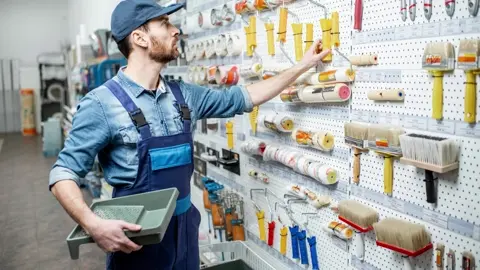
Essential Painting and Decorating Tools
Effective planning and preparation are essential for the seamless execution of any project. Central to this planning is the identification of all necessary tools to ensure the project unfolds without a hitch. Recognizing and securing these tools in advance lays the groundwork for success.
To avoid overlooking any details, it’s beneficial to streamline the list of painting and decorating tools by dividing them into four primary categories. This systematic approach guarantees that we are equipped with all the required implements prior to commencing our project, fostering a smooth completion.
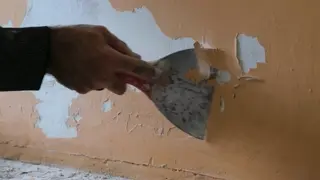
1. Preparation Tools and Materials Prior to Painting
we will outline the most important tools and materials needed for successful wall preparation before painting, which will assist you in achieving a successful outcome for your project. The tools and materials required for preparation can vary depending on multiple factors, including the condition and texture of the walls, the type of paint intended for use, and the colors planned to apply. it’s crucial to evaluate the walls to determine which tools you need to achieve the desired outcome. For example, if the walls are in good condition and only require minor touch-ups, you may not need all the typical preparation tools such as a scraper or paint remover.
- Ready-Mixed filler
It is important to ensure that the walls are smooth and free of imperfections. One way to achieve this is by using a ready-mixed filler that can be applied to any defects and then sanded down once it has dried. However, if the walls are already in good condition and there are no noticeable defects, then it is possible to skip this step and simply opt for smoothing the walls. The end result will be walls that are even, smooth, and ready for a fresh coat of paint or wallpaper. While some may opt for traditional spackle or joint compound, a ready-mixed filler can sometimes be a better option. - Filling Knife
One of the necessary tools for preparing walls is a filler knife. The filler knife is used to level any uneven surfaces and remove any bumps, ensuring a smoother finish. - Flat Scraper Tool
Whether you’re removing paint or smoothing down rough edges, this versatile tool can handle a variety of tasks. They come in a range of sizes, but a medium-sized one works great for most projects. - Sandpaper
using sandpaper is an effective way to smooth out any bumps or ridges, and helps to create a consistent texture for the paint. Whether working on a piece of furniture or a room in a house, sanding down the surface ensures that the paint will adhere properly and look its best. Before sanding, the surface should be cleaned to remove any dirt, debris, or other contaminants that could interfere with the sanding process. Once the surface is clean, it’s time to choose the right sandpaper for the job. - Paint Remover
Removing old paint or wallpaper can be one of the biggest challenges when it’s essential. There are many products on the market that claim to make this job easier, but many of them contain harmful chemicals that can be dangerous to breathe in. Fortunately, there are natural paint removers available that are just as effective as their chemical counterparts. These plant-based products work by breaking down the bonds between the paint and the surface it’s applied to, allowing it to be easily scraped away. These products are often made from biodegradable materials like citrus or soy, and are just as effective as traditional options. - Wall Cleaner
Before you start painting any room, it’s important to make sure that all the surfaces are completely clean. One of the most important is ensuring that your walls are clean. This is especially true if you’re painting in areas that see a lot of traffic, like hallways and entryways, or places that are prone to stains, like the kitchen. Dust and debris can seriously impact the finish of your paint, so it’s important to clean your walls thoroughly before beginning the painting process.
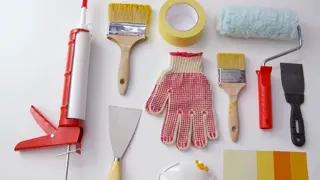
2. Paint Applicators
One of the main ingredients of quality painting is the quality of the paint used. However, even with the best paint, the quality of painting can still fall short if the painting tools are not right or are of low quality. Here are the tools and materials needed to bring out the full quality of the paint that you choose to work with.
Interior Paint Primer
Interior paint primer creates a smooth surface for the paint to adhere to, and helps to cover any imperfections on the wall. Additionally, using a primer generally helps to reduce the number of coats of paint needed to achieve full coverage, thus saving time and money in the long run.
Interior paint projects require a different type of primer than exterior projects, so it is important to choose accordingly. The primer you choose should be suitable for the paint you plan on using, in terms of both type and color. for example, a primer for oil-based paint will be different than one for latex-based paint.
Paint Roller Set
This set typically includes a roller handle, sleeve, extension pole, and tray, providing all the necessary components for effortless painting. Regardless of your skill level, using a high-quality paint roller and sleeve can make all the difference when it comes to achieving a clean, professional-looking paint job. Not only do these sleeves hold more paint than cheaper options, but they also release the paint evenly, resulting in a smoother finish. In addition, high-quality roller sleeves are designed to resist matting and shedding, meaning they won’t leave flakes of lint or fuzz in the paint. With all of these benefits, it’s clear why investing in a good quality paint roller sleeve is worth the extra cost.
paint roller extension pole is a must-have accessory. This simple tool allows you to reach high walls and ceilings without the need for a ladder, ensuring a more efficient and safer process. Additionally, it can significantly reduce the strain on your back and arms, allowing you to work for longer periods with less fatigue.
Paint Brushes
When it comes to house painting, paint brushes play a critical role in ensuring that the job is done to perfection. Not only do they help the painter apply the paint evenly, but they also provide control and finesse when dealing with intricate angles and corners. Using the right paintbrush can make the difference between an amateur and professional-quality job.
Paint Extender
Whether you are a novice or a seasoned expert, understanding the benefits of a paint extender can improve your painting technique and fluidity of motion. By adding this transparent solution to your paint can, not only will you dilute the paint, making it go much further, you will also be able to easilly improve blending and transitions of color for your artwork.
3. Auxiliary Tools
When it comes to home improvement projects, having the right tools is essential. Without them, even the simplest jobs can become a frustrating chore. Luckily, there are many useful tools available that make any project easier, and their importance cannot be overstated. From basic hand tools to power tools, having them on hand may be the difference between a successful project and one that falls short.
Here are some of these tools that may help you during the painting process:
- Painter’s Tape
Whenever you’re painting, whether it be by brush or by spray, one thing you’ll need to ensure is that the paint stays only where you want it to. That may be easier said than done, as paint can have a tendency to get where it shouldn’t be. However, there is a fairly easy, simple, and reliable solution in every painter’s arsenal: painter’s tape. This type of tape can help you create clean edges, straight lines, and crisp corners. - Extra Bucket
One tool that many people overlook is a bucket. A bucket can be a great asset when you’re painting, as it allows you to easily mix the paint. In fact, a bucket is often better than a stir stick. - Toolkit
it is essential to have a set of basic tools. These tools should include a flat screwdriver for those tasks which require a bit of prying or leverage, such to open paint cans and scrape protrusions, such as those found on textured ceilings. Additionally, a Phillips screwdriver should be included as they are commonly used in electronics and other household items. You may also need pliers and a hammer. - Stepladder
A stepladder is a must-have tool in any home or workplace. It is a versatile device that can serve a wide range of purposes. Whether you’re changing a lightbulb, painting a room, or simply accessing hard-to-reach areas, a stepladder can make your life much easier and safer. While it is easy to take for granted, a properly functioning stepladder can significantly increase safety while working at heights.
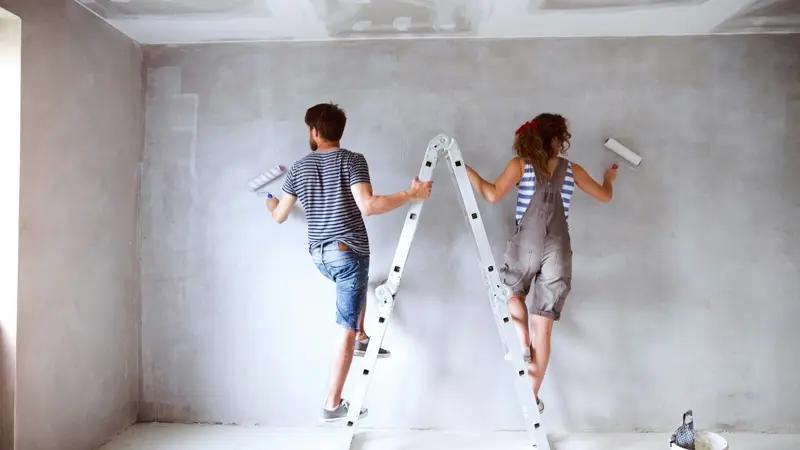
4. Safety and Protection Tools
It is crucial to prioritize safety when embarking on a home project. This not only includes using protective gear, such as gloves and eye goggles, but also employing the proper tools for the job. Injuries can occur if you do not take these precautions seriously, and it is not worth risking your well-being for the sake of completing a project quickly. By taking the time to prioritize caution, you can avoid potential setbacks and ensure the success of your DIY endeavors.
Here are the most important protection and safety tools you need in your painting project:
- Dust Sheet or Canvas Sheet
Painting can be an incredibly messy job, with dust, paint and debris flying around everywhere. This is why it is critical to take measures to control all of the dust and debris generated while painting. One such method is to use dust or cloth paper to cover all of the surfaces you don’t want to paint. Dust paper can be used to cover the floors, while cloth paper can be used to cover the furniture and other objects that cannot be moved out of the room. - Provide Ventilation and Lighting
When painting indoors, it is also essential to ensure that the workspace is well-ventilated to allow for proper airflow and to prevent inhaling any toxic fumes. one important tool is a fan, which can help to circulate the air and prevent paint fumes from accumulating in your workspace. Additionally, having sufficient lighting is crucial to ensure that you can see what you are doing clearly and achieve the best possible results. - The Right Outfit
Decorator’s overalls are recommended as they protect clothing from stains and chemicals which can be harmful to skin in some cases. Furthermore, they provide freedom of movement which is crucial when painting. - Dust Masks
Painting, in general, has always been a great way to transform a plain wall into a beautiful masterpiece. However, it can also be a physically hazardous task especially in situations where the paint or finish produces harmful dust particles that can enter your lungs. One solution to protect oneself is to wear a dust mask while painting to minimize accidental inhalation of these particles that can cause respiratory issues. - Painter’s Glasses
Use anti-fog goggles, which provide clear vision and reduce the risk of injury while painting for long periods of time. These glasses are equipped with a special coating that prevents fogging, particularly when going from warm to cool environments, and also keep harmful debris out of the eyes. - Gloves and Shoe Covers
Painting can be a messy and potentially hazardous task if adequate precautions are not taken. It is essential to wear protective gear like gloves and shoe covers to avoid getting paint all over your hands and feet. Not only does the protective gear prevent paint stains, but it also protects against hazardous chemicals that may be in the paints.
Conclusion
Having the right tools is crucial when it comes to achieving success in the painting business. These tools not only ensure that your work is of high quality but also make the process smoother and more efficient. Paying attention to the small details such as material quality, the right kind of them, and protective equipment will pay dividends in the long run. With the correct tools in your arsenal, you will be able to deliver excellent outputs that you can be proud of.
